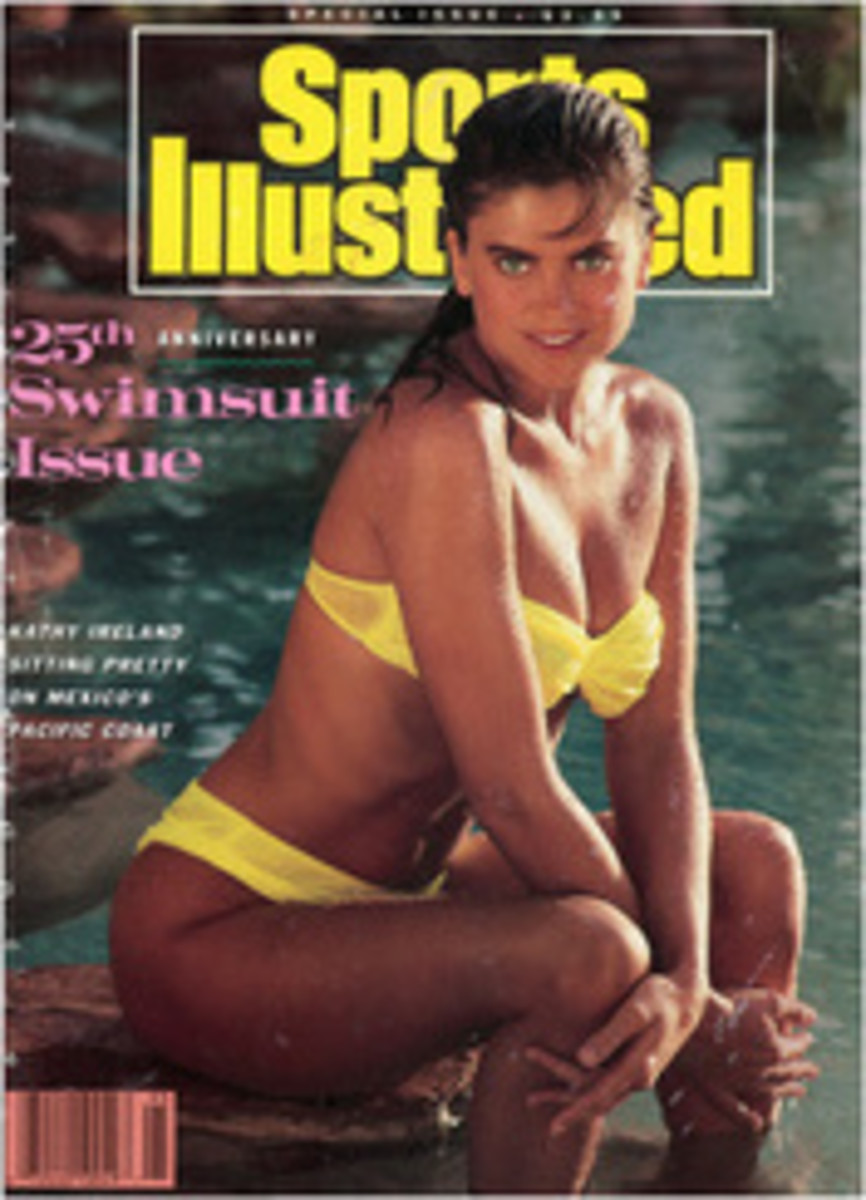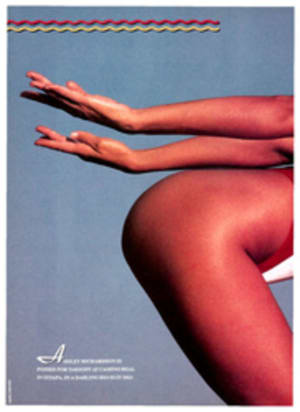
Her Gaze Can Daze
Down by the boardwalk at the Santa Monica Pier, the mysterious woman in black takes off her very dark sunglasses. Behind her the Pacific Ocean turns gray. Dayle Haddon's eyes—twin pools of jade, turquoise and aquamarine—helped put her on the cover of SI's 1973 swimsuit issue, under the billing DON'T JUST SIT THERE.
These are the eyes that Nick Nolte looked into in North Dallas Forty, a film in which Nolte's best line to Haddon's character is, "You've got fantastic eyes." It was a B movie.
Sixteen years have passed since the SI cover, and 10 since North Dallas Forty, but Haddon still has the bearing of a young woman. Balancing on a rotting beam by the pier, she doesn't waver as she walks. Her footing is sure, her carriage perfect. She also hasn't let fame throw her.
"I was too young to know what was happening to me," she says of the swimsuit cover. "I was in my teens. I know I'm not as pretty as some other girls. But people would write me and tell me their problems. They said I'd understand. People think I can see their secrets, who they are. And I do."
Haddon got off to a poor start in her native Montreal. She was a fragile, sickly child, but her green-eyed father, Edward, an engineer, and her blue-eyed mother, Terry, willed their little girl to get better. Dayle put up a pretty good fight herself.
"I've been given many things," says Haddon. "But I've had to pay for some of them." Dance, for instance, was painful but worth it. "I did the modeling to pay for the dancing," she says.
She attended a ballet school, L'École Supèrieure de Danse de Quebec in Montreal, for a number of years and once danced with the famed Bolshoi company of Moscow during its tour of Canada. "Dance gave me discipline," she says. "It taught me to deal with pain. Dancers cry all the time. Tears have streamed down my face, too. You never know when it can get away from you. Seems like I've been up and down so many times. People want to pin you down. People can hurt you."
Haddon's career as model-actress has been a frustrating one. After that disappointing turn in North Dallas Forty, her first major role in an American movie, she had few illusions about being an actress. "I hated doing that film," she says. "The movie started without anyone being prepared. There was a lot of explosive energy on the set. We went through some 30 script revisions because they couldn't decide a direction for my character. But no matter what was in the script, she was either reading or doing needlepoint. I played a rich girl who had no life, did nothing."
The critics were not kind to her when the film was released in 1979. "Dayle Haddon's inexperienced playing adds nothing even faintly convincing to the badly written love interest," said TIME. "Haddon is stuck with an underwritten part, and makes the least of it," wrote Newsweek. "Amazingly uninteresting," said The New York Times.
With her career in Hollywood going nowhere after North Dallas Forty, she moved to France, where in six years she modeled, made films in both Italy and France, did photo shoots with Guy Bourdin, who is the top fashion photographer in Paris and whom Haddon compares to Lord Snowden. In 1981, Harper's Bazaar named her one of the world's 10 most beautiful women, a list that included some heavy hitters: Susan Sarandon, Victoria Principal, Jacqueline Bisset and Brooke Shields.
She returned to this side of the Atlantic and appeared with Catherine Deneuve in the 1986 Canadian-French film Love Songs ("tedious work," said the Times) and in a Canadian mystery, Bedroom Eyes, in which she played a psychiatrist.
"I haven't always done what I wanted to do, but I've done things," she says now. "I wanted to avoid L.A., but as it turns out, here I am. It can be very subtle, the difference between France and America, Paris and L.A. America is result-oriented. That's good. But what about the doing? Doesn't that count? In France, an actress is like a shopkeeper; she does her job. Here you're either a live actress or a dead actress. To hate someone or be jealous because they've got something I wanted, I can't do that. I like to work, though. Anybody out there?"
In 1986 she even produced and starred in her own picture, The African Rose. It was filmed over 10 weeks in the Sahara Desert in Tunisia with heat that reached 120°. The fair-skinned Haddon utilized a No. 33 sunblock, a hat and a parasol. She thought working in the Sahara was hard but worth the effort, even though the movie was never released in the U.S. It was just another disappointment to overcome. "If you love life, you have to be grateful for what you have," she says. "Change is the scariest thing. Most people don't know how to go forward."
Colleen Camp, a highly regarded character actress, is one of Haddon's best friends. They met in 1980, when Camp was playing a country singer in a Peter Bogdanovich movie, They All Laughed, which costarred Ben Gaz-zara, Audrey Hepburn and Dorothy Stratten. "Dayle's values go beyond the business," says Camp. "She doesn't care about beauty and glitz. She's real. She's interested in her own growth. She always sees somebody for more than what they are showing."
When the two women met, Camp was playing a comic role in They All Laughed and hiding something about herself. Haddon said to Camp, "There's a beauty in you. You should be modeling."
"So she got me in the Italian Harper's," says Camp. "She was always a wonderful friend, even to this day. She got me a lot of work. I'll do anything for Dayle. She has a real heart."
"It's true that production boosts morale," says Camp. "Looking for work can become very personal. It's tough when you're rejected."
Haddon now has work, lots of it. She costars with someone named Jean-Claude Van Damme in a film called Cyborg, a sci-fi thriller to be released in April. She plays Pearl Profit, a heroine whose mission is to save the world. Saving the world seems like a stretch for anybody. She has just finished filming Silence Like Glass, starring George Peppard and Jami Gertz, in which she plays another psychiatrist, and she has plans to produce two other movies.
Haddon is asked to name her three favorite animals, in order of preference. She mentions a horse, because it's wild, independent and powerful; a panther, because it's mysterious, seductive and wastes no motion; and a puppy, because it's generous, loyal and loving. The first animal, according to a psychological test, is how you see yourself; the second is how others see you; and the third is how you really are.
Down by the Santa Monica Pier, Haddon guns the black BMW 320i away from the curb—acting independent and powerful, looking mysterious and seductive and, somewhere underneath, being loyal, generous and loving.
Cut. Print it.
THREE ILLUSTRATIONS
PHOTO
WALTER IOOSS JR.
PHOTO
GREGORY HEISLER
HADDON: "PEOPLE THINK I CAN SEE THEIR SECRETS, WHO THEY ARE. I DO"
PHOTO
GREGORY HEISLER
HADDON, WHO JUST SHOT A FILM IN MUNICH, SURVIVED AN INAUSPICIOUS DEBUT IN "NORTH DALLAS FORTY"

